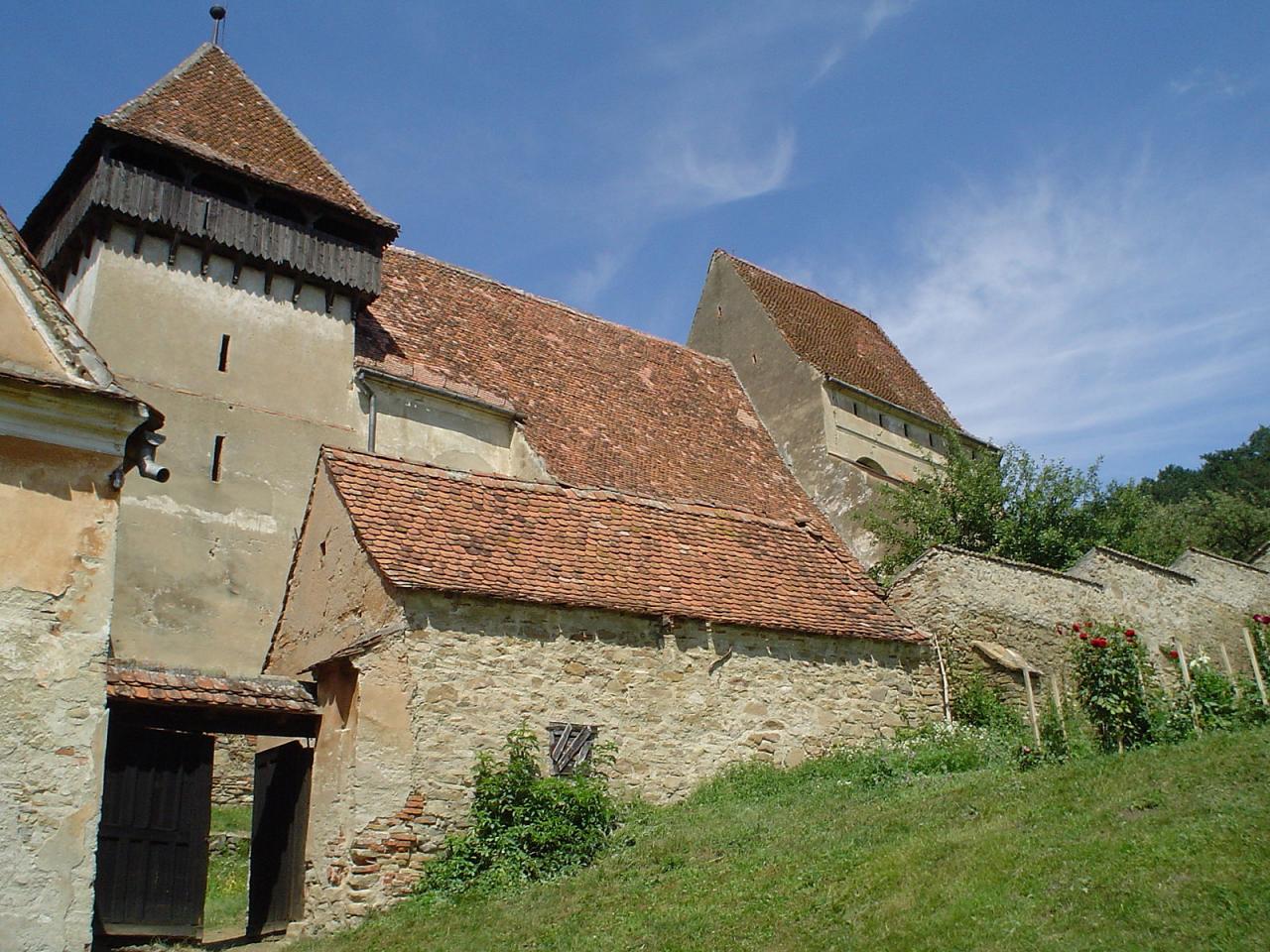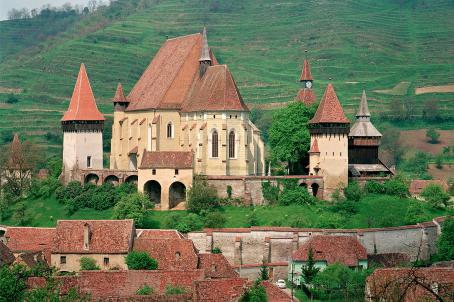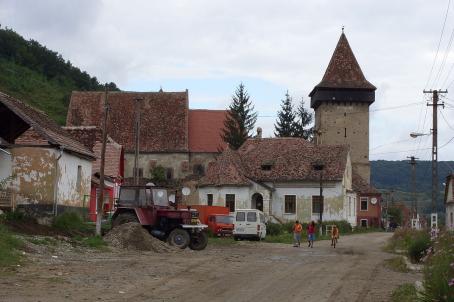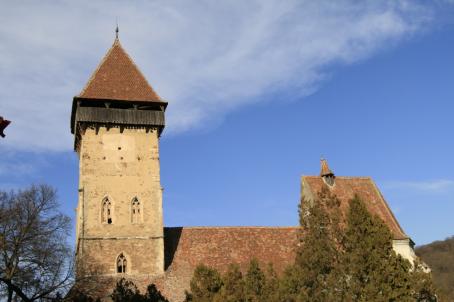Copşa Mare Fortified Church
On the eastern hill above the village an early Gothic basilica with tower was first erected. Around 1510 the church was fortified, thus the old chancel was demolished and replaced by a high chancel with polygonal closure strengthened by a defence level built in stone. Due to its height of almost 11 meters and its defence systems the chancel protected the ensemble against the slope. A wooden defence level was built on the tower. The chancel still preserves its stellar vault and the fine tracery on the windows originating from the construction time of the church, but the nave was rebuilt in 1795 in Baroque style. On the northern side of the chancel stands the two-leveled sacristy dated 1519. On its second level a chapel was set up. Especially valuable are the Renaissance portal of the sacristy and the Neoclassical altar.
About this building
For more information visit on this building visit https://kirchenburgen.org/en/location/grosskopisch-copsa-mare/






